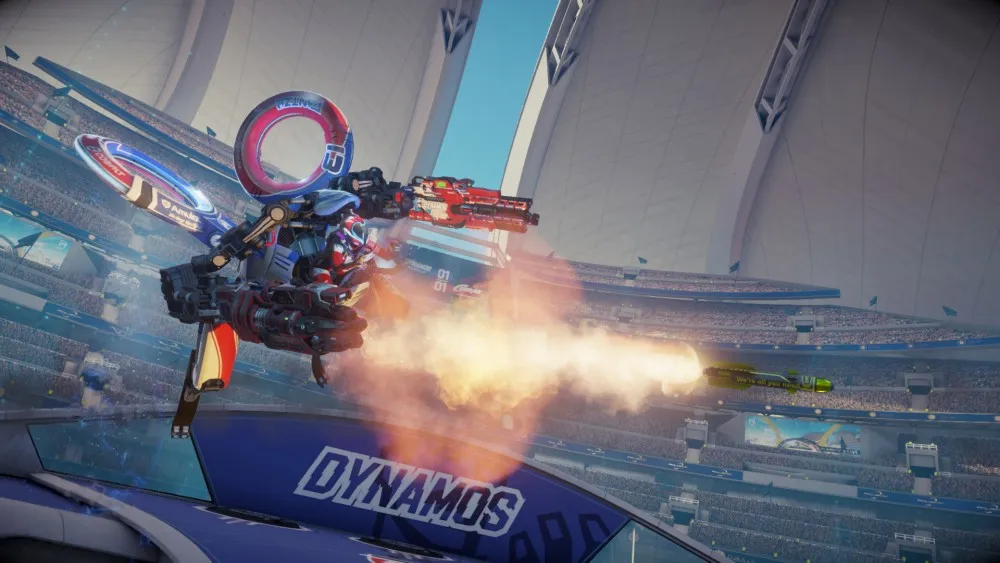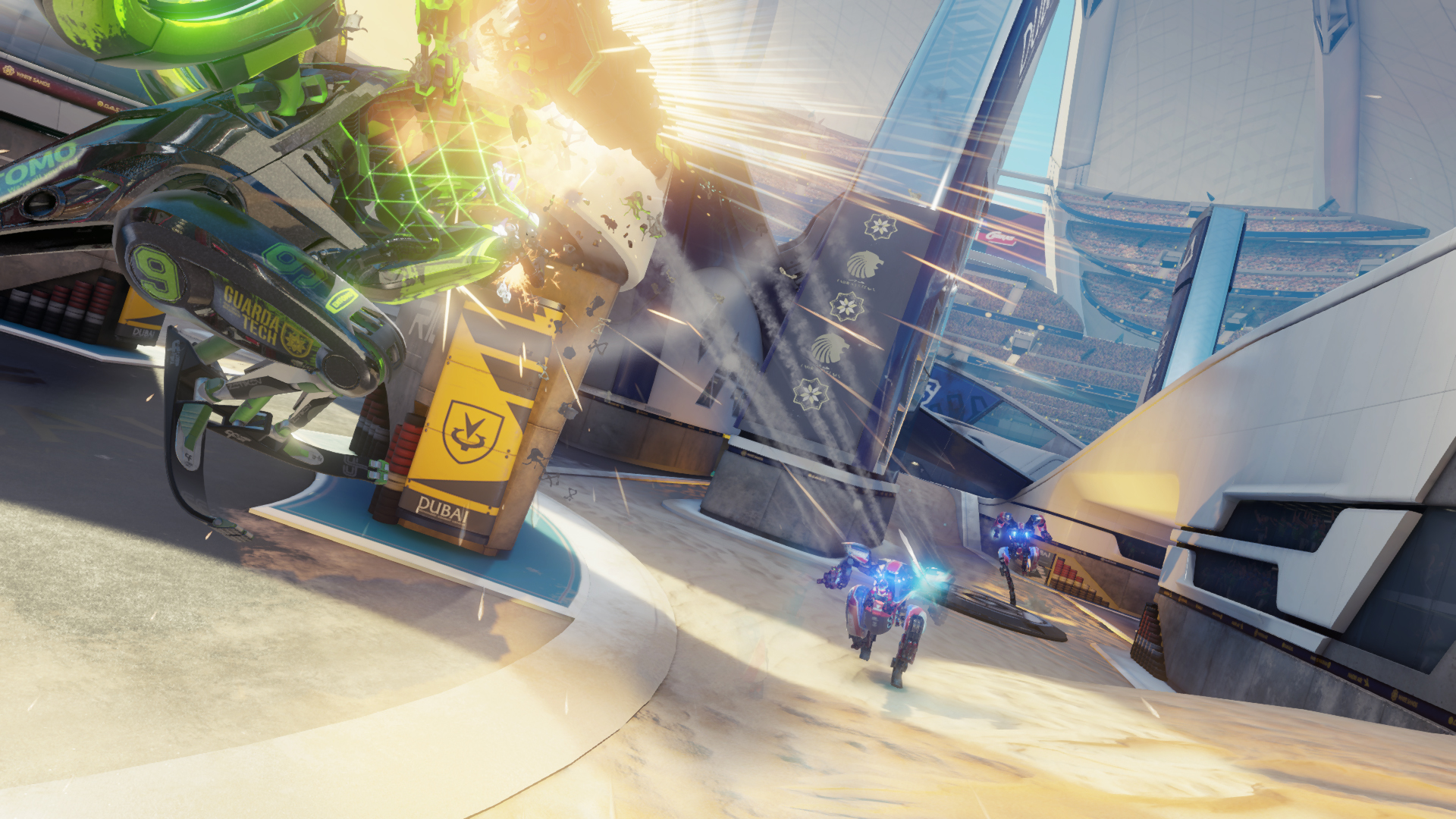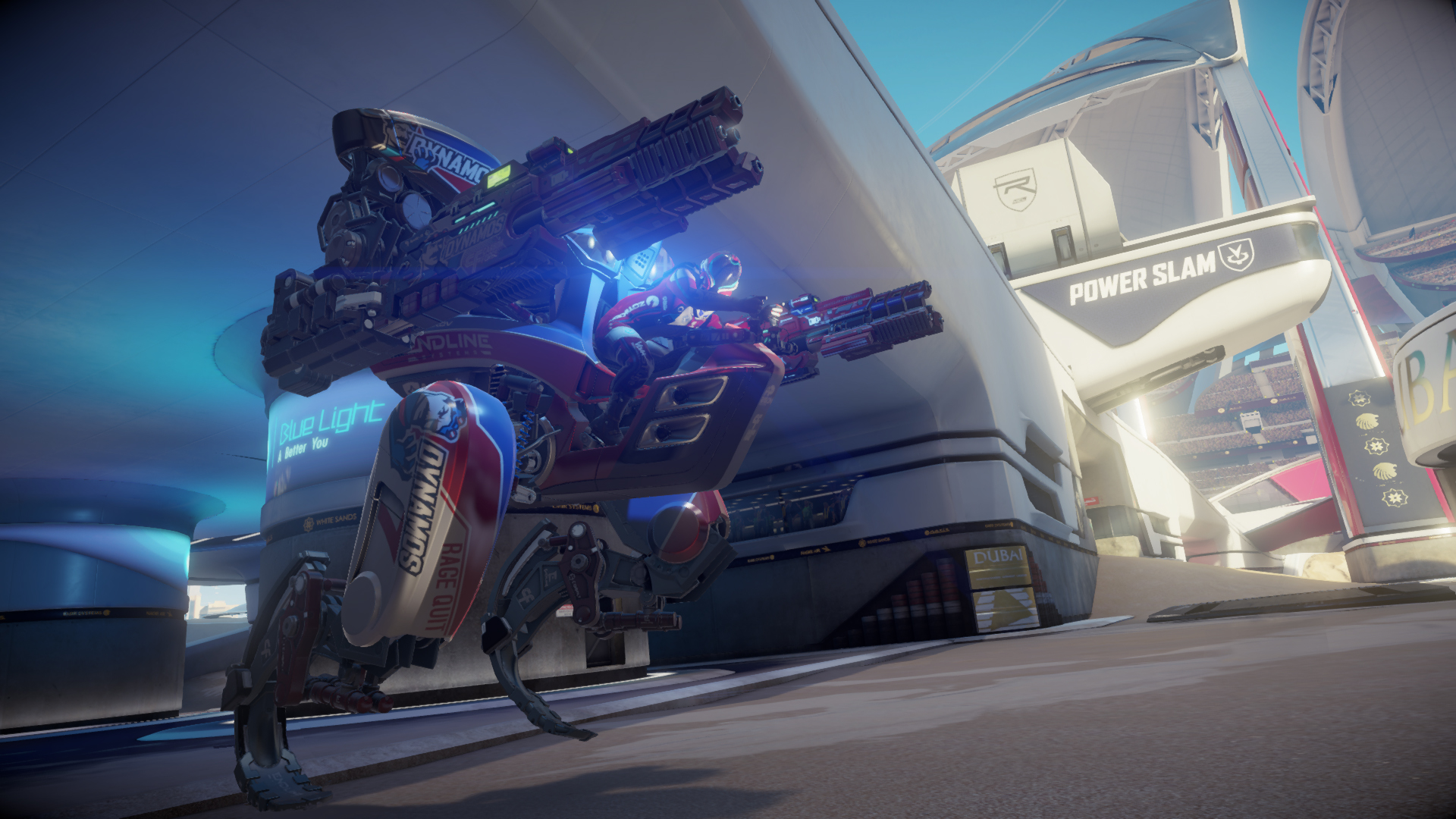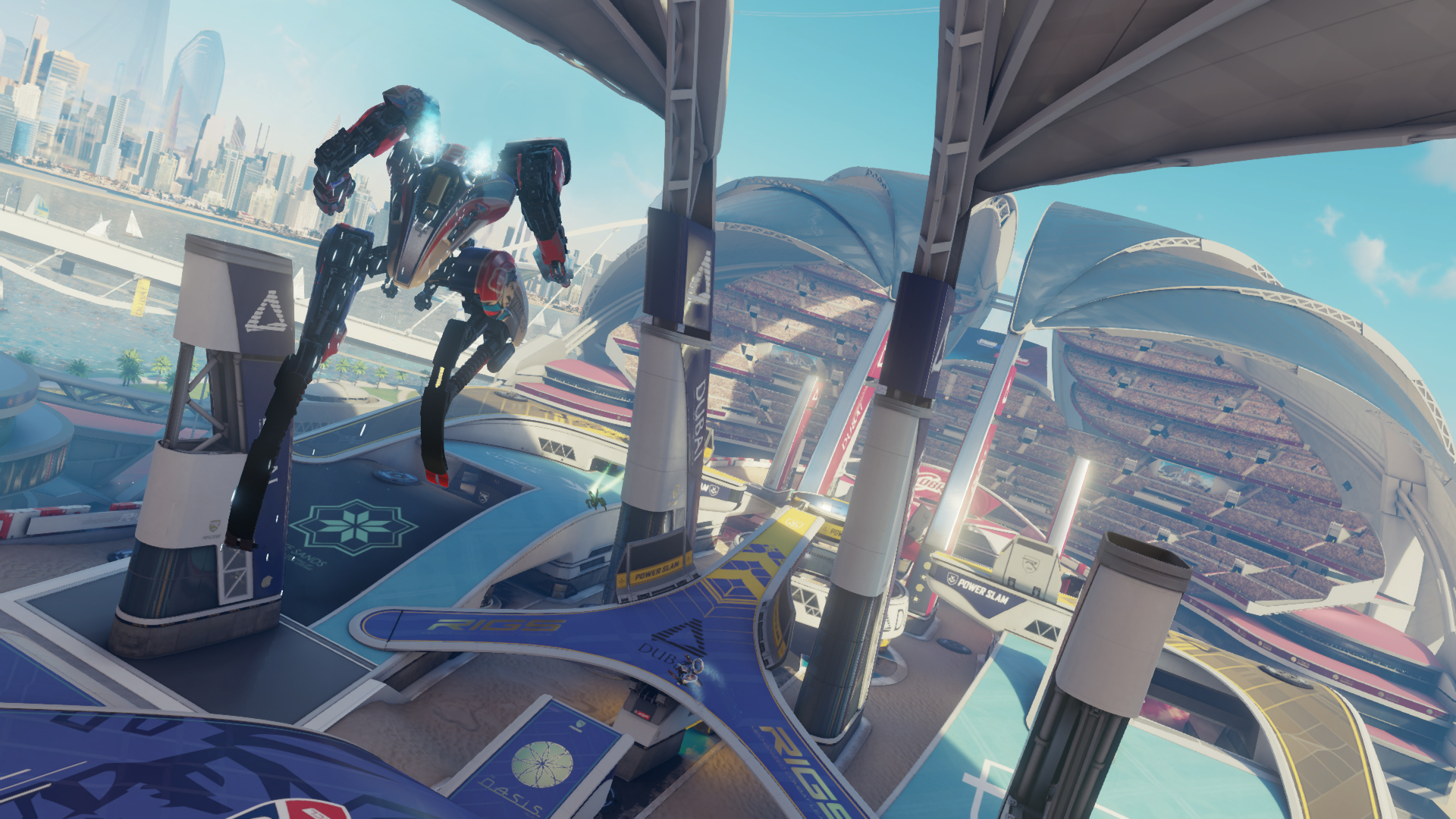Before the PlayStation VR event during GDC, we didn’t know very much about Rigs Mechanized Combat League, other than the simple fact that it was a PSVR exclusive competitive shooter designed to resemble a futuristic mech combat sport. Luckily, at the PSVR event we had the chance to get some hands-on time with a demo build of the game that featured full 3v3 competitive multiplayer.
When I sat down at my station, the demo started with my character standing in a hangar full of other mechs and pilots milling about. I could look around and down at my body, but could only rotate the giant mech that was stationed in front of me before the battle.
Once I was in the cockpit and the match was getting ready to start, I looked around and marveled at the detail. Even though I’ve played games like Elite Dangerous and EVE: Valkyrie in VR already, it’s never not an appropriate time to appreciate a high-quality cockpit design. I particularly liked how the weapon turrets on either side shifted to follow my gaze.
The left and right analog sticks move the mech as they would with standard FPS controls, but by moving my head I can adjust where each of my weapons are aiming. It felt a bit awkward at first simply because it’s not something I was used to doing, but it quickly became second-nature. Once I started relying on my eyes and head to aim my shots instead of my clumsy thumbs, I was infinitely more accurate.
The interesting part of the premise is that everything takes place in a futuristic society that ushers in thousands of spectators for these fights as a live sporting event. In the game mode that I played, the goal wasn’t so much to shoot and kill the other team – although that certainly helped – but rather it was to enter overdrive mode and drop our entire mech suits into the center ring in the arena. You can go into overdrive by collecting orbs that damaged and defeated enemies drop or by killing three enemies in a row without dying. Think of it as a sort of mechanized Unreal Tournament mixed with basketball.
Sprinting up a ramp, boosting into the air, and descending through the goal to score for my team was extremely satisfying, but not as satisfying as knocking an enemy mech out of the air just before they score. That’s the kind of rush that’s only comparable to barely securing a last-second save in Rocket League.
The final release of Rigs will include a single player career mode, which will consist of matches against AI opponents that help you unlock new rigs that can also be taken online. There are four different classes of rigs and multiple rigs within each class and several different arenas to play in. Hopefully you can also customize and upgrade your rigs as well – it’d be a major missed opportunity if not.
What struck me most about Rigs is the complete lack of any VR sickness whatsoever. For a game that moves so quickly and requires quick reflexes, I definitely expected to feel a bit of discomfort. Luckily, most games that take place inside of a cockpit are able to circumvent the issue and Rigs is no different.
The mech that I controlled had the ability to switch between three different modes – speed, attack, and repair. As expected, each mode enhances the aspect it pertains to and bolsters that ability, while overdrive mode activates all three modes at once.
After speaking with the developers, it’s clear how much work they’ve put into making Rigs both accessible for newcomers to VR (essentially most consumers), and deep for the dedicated players. One extremely clever implementation is how they’ve used colors to underscore the importance of different areas. For example, all things yellow have to do with overdrive or scoring – two closely related concepts in every match. And instead of confusingly having to remember which colored team you’re on, the game automatically changes all enemies for both teams to red and all teammates to blue. It’s simple, but smart.
Developed by Guerilla Games Cambridge, the experienced developer with years of experience making first-person shooters with the Killzone franchise for PlayStation, Rigs is quickly shaping up to be the first (and only, for all intents and purposes) competitive VR game on not only PSVR, but any VR platform in general.





























